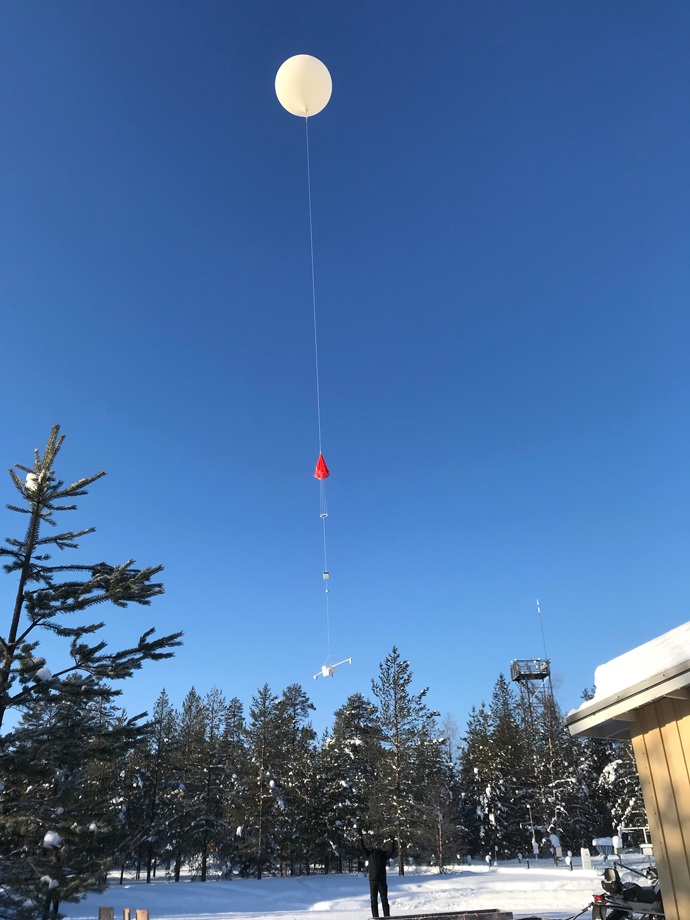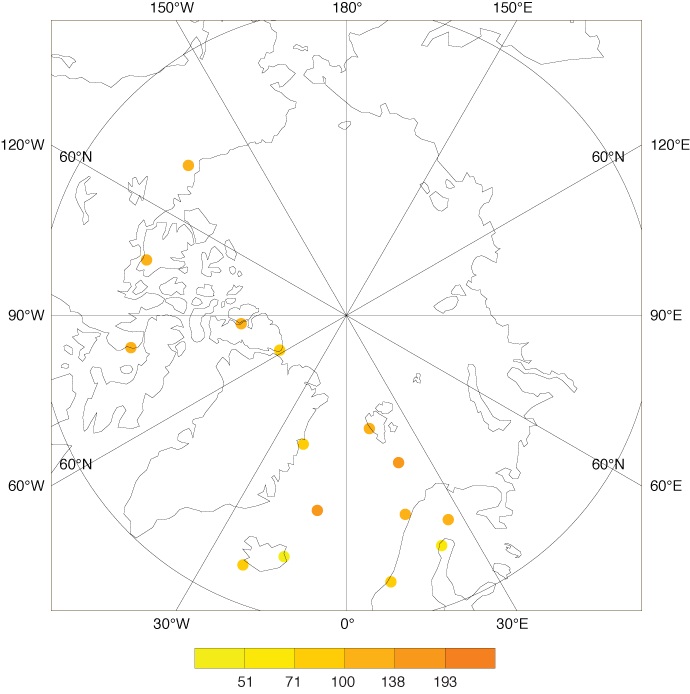

The Arctic is a sparsely observed region. (Photo: DC Productions/Photodisc/Thinkstock)
Weather data collected by radiosondes launched in the Arctic in February and March 2018 as part of the Year of Polar Prediction (YOPP) are feeding into ECMWF forecasts.
The availability of additional observations in the Arctic has been keenly anticipated as this region is normally only sparsely observed.
The radiosonde data are distributed via the Global Telecommunication System (GTS). As such they are automatically used in ECMWF’s data assimilation system.

Radiosonde launch on 23 February 2018 at the Finnish Meteorological Institute’s Sodankylä site as part of the YOPP special observing period in February and March 2018. (Photo: Dr Andreas Dörnbrack)
Data assimilation combines observations with a short-range forecast to obtain an estimate of the current state of the Earth system. This is then used to initialise weather forecasts.
To understand the contribution the observations make to forecasts, ECMWF is planning to run ‘data denial’ experiments, in which the extra radiosonde data are removed from the data assimilation.

The map shows the location of participating radiosonde stations and the number of radiosondes launched from them in February 2018.
Similar investigations will be undertaken for other types of conventional observations in the Arctic, and also for satellite observations.
“The aim is to determine their relative impact on forecast quality, including in lower latitudes,” says ECMWF scientist Linus Magnusson.
This work is a part of ECMWF’s contribution to the EU-funded Horizon 2020 APPLICATE project. It will help to provide guidance on an optimal observation network for the Arctic.
“The extra radiosonde data will also support investigations into the sources of forecast errors,” says Linus, who works in ECMWF’s diagnostics team.
With soundings available from 16 stations up to six times a day, atmospheric conditions in the region can be studied in greater detail than has been possible until now.

The number of radiosonde launches per day from participating stations rose sharply at the beginning of the YOPP special observing period.
YOPP is part of the Polar Prediction Project, a long-term initiative within the World Meteorological Organization's World Weather Research Programme (WWRP).
YOPP includes three special observing periods, the first of which started on 1 February and will end on 31 March 2018.
The extra radiosondes launched during these periods are supported by national weather services, EUMETNET and academic research institutions.
To find out more, visit the Polar Prediction Project and APPLICATE websites.
